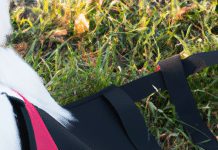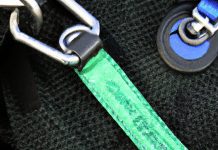A training shock collar can be used on the Puppy from 10 weeks old, but it is recommended only in exceptional cases.
Try different learning types, like with a child, to learn your little Puppy’s basic commands.
Try positive and negative reinforcement or rewards when he reacts positively to the given command before using training collars.
There is a big market for dog training collars, and some are qualified for the young puppies from 8 to 10 weeks; collars are used early for anti-bark learning that delivers little shock and vibration when your Puppy starts barking.
Read Next – Educator E-Collar Remote Dog Training Collar
When should you use a shock collar?
Puppy problems are barking, running away, chewing furniture, toilet training, and other undesirable behavior for the puppy owners.
After a few times your Puppy feels a disagreeable sensation of the training collar, he will stop doing the activities.
This is commonly used by puppy owners when the dog is left home alone during the day, and it is not acceptable to have a barking dog all day.

Table of Contents
Training a shock collar too early is too dangerous for the Puppy.
If you use force in the Puppy’s training collar, he can develop stress and anxiety, and you don’t want your Puppy to feel that way.
Positive reinforcement can not hurt your Puppy and make him feel stressed like a shock collar at a young age.
When should you start using a training collar on a dog?
Alternative learning methods can be used on the puppies when you want to train them or teach them something new.
A shock collar must be the last option to apply for a learning puppy.
The shock collar is additional stress on the Puppy and will get him to the constant fear that will change him in the second.
Shock training collars are recommended to use at a later age. When your Puppy is fully trained with the basics and responds well to the basic commands, and starts the advanced training, you can start using a training collar.
Is shock collar training effective?
A training collar should be a distance command tool when your dog cannot hear you.
A training shock collar should be used to reinforce the well-known commands so you don’t confuse your pet.
Recommended: Bark Collar on 8-Week-Old Puppy
A shock collar will give you fast results, only a few shocks away for your dog to correct the unwanted behavior.
Aftershock stimulation only takes a beep signal or vibration to warn him, which is enough. Shock collars are also suitable for keeping a dog in the yard to give him freedom and safety at the same time.
If you use a shock collar for barking on the older dog, you can use it with effect even when you are not at home.
They have an auto-correcting mode to be set on while you are away. We do not recommend leaving your dog alone when auto mode is placed on the training collar.

Training collar cause shock – you are using aversive behavior modification that can shock your pet and make him give you negative feedback.
A dog can start to fear people, objects, sounds, and other stuff that he will associate with the collar stimulation he gets from you.
Overcorrection is a big problem when using a training collar; when the shock is sent to your dog, automatic collar stimulations can shock him unintentionally or too many times. This can confuse him and cause problems with his behavior.
Lack of positive reinforcement and rewarding system – if your dog gets your affection, verbal approval, or a tasty treat, he will be happy.
A shock collar can deter negative behavior but will not reward him when he does something good.
If you decide to use a shock collar first, let your dog wear it for one week before turning it on. Please don’t use the collar immediately when you put it on him so that he will associate the collar with the positive stuff during the time.
You are trying to get your dog to think that negative behavior is causing the shock he feels, not the collar he wears when you turn the training collar on. Please start at the lowest stimulation levels to see how he reacts to it when activated.
How tight should a shock collar be?
You can slowly try the training collar stimulation level if your dog does not respond to the stimulation. Use the collar to reinforce the commands that he already knows and understands.
Say the command that he knows and wait for his response. If he is not responding, press the button and see what will be. Reward him as soon as he responds positively to your command.
You need to control your pet’s bad behavior and use the training collar to manage annoying and aggressive behavior. When he starts doing the activities, turn on the stimulation.
And don’t ever hold stimulation on for more than three seconds and push it repeatedly. You want him to learn what he can do and what is banned.
Should a puppy wear a collar all the time?
Don’t let your dog see that you are causing him that unpleasant sensation when he does something wrong; you want him to associate you with the reward and positive reinforcement.
Every Puppy, the dog, is different from every human, and he needs time to learn and develop.
Puppies are fragile, they need time to play and try out your boundaries, and he needs to see what they can or can’t do.
5 Tips: E-Collar Dog Training for Beginners
Read Next – Off-Leash Dog Training
[content-egg module=Amazon template=item_simple]






























